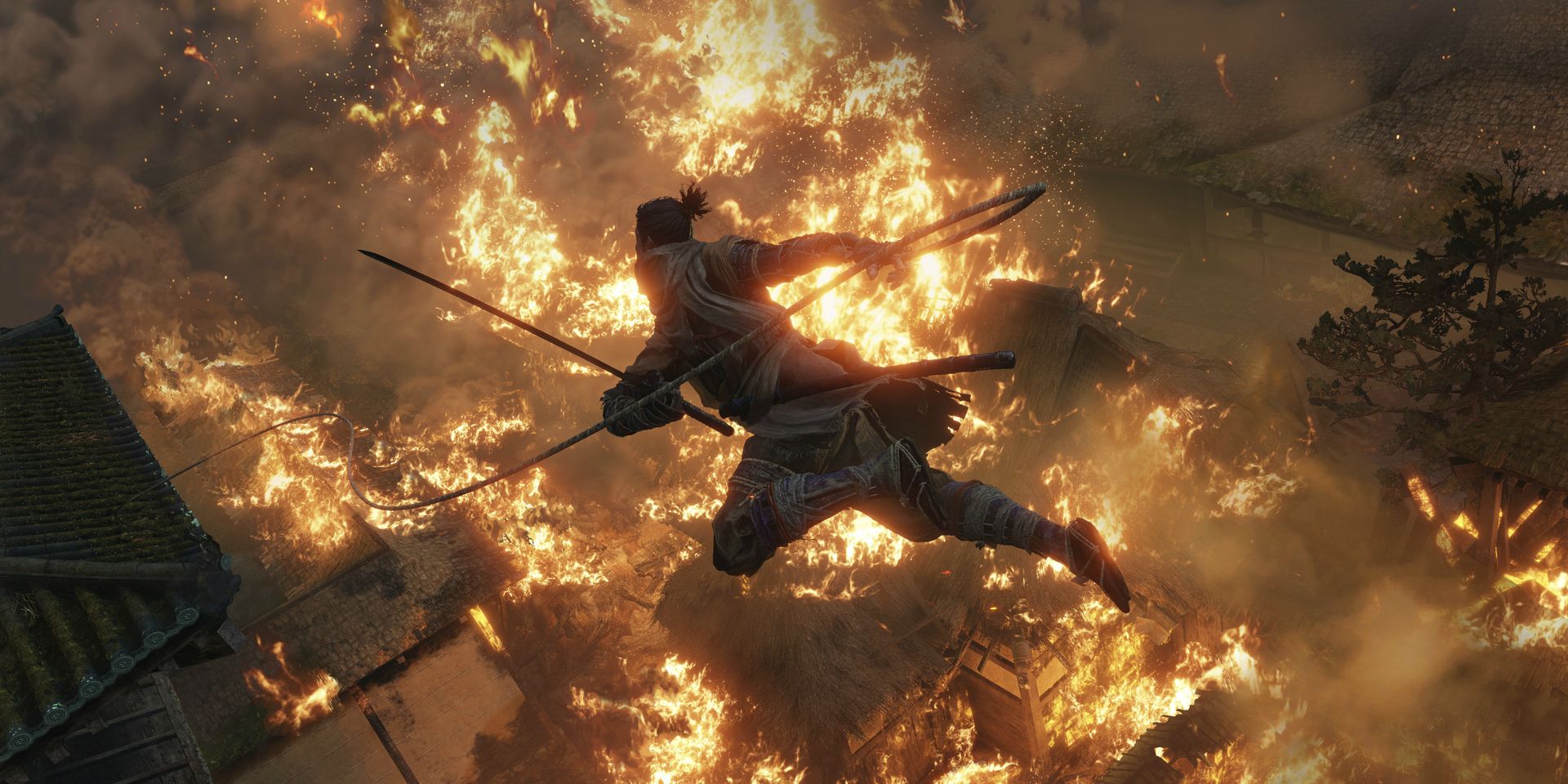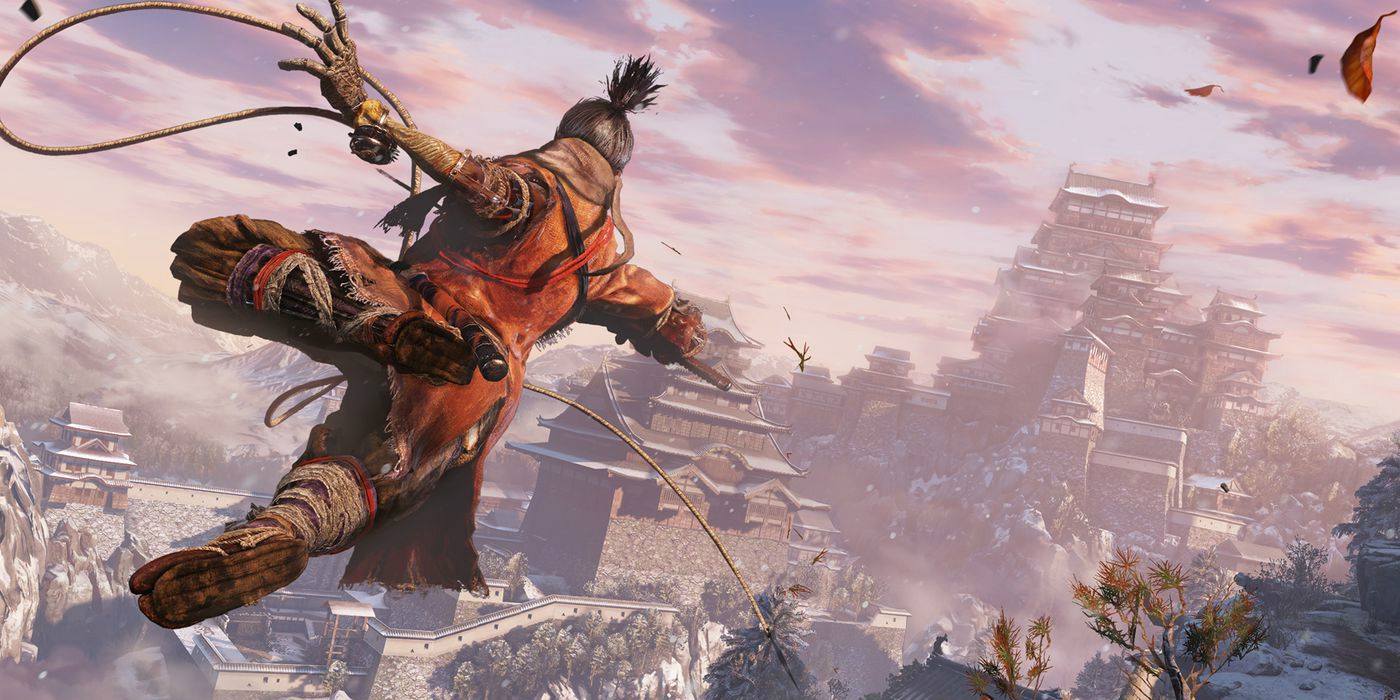Sekiro: Shadows Die Twice advances the FromSoftware model that fans are familiar with for an engaging yet calming exploration into ninja and samurai culture. FromSoftware is known for their extremely difficult games, such as Bloodborne and the Dark Souls series, and Sekiro: Shadows Die Twice expands upon that even if FromSoftware didn't intend upon it.
At E3 2018, Screen Rant got to see Sekiro: Shadows Die Twice up close and understand what FromSoftware was trying to achieve with this new title. In short, they're trying to forgo the past while also use their previous models to establish a foundation for the new series. Rather than being built around a specific character or story, Sekiro: Shadows Die Twice allows players the unique opportunity to craft their own playthrough by utilizing the resurrection part of the game, as well as approach combat in a number of ways.
Related: Every Game Coming Out in 2019 - A Complete List
FromSoftware's Sekiro: Shadows Die Twice enables players to resurrect themselves - hence the Shadows Die Twice part of the name - while also making the mechanic detrimental if used improperly. Players have the option of resurrecting themselves after falling in battle, but if used at the wrong time or used incorrectly (for whatever reason), players will then respawn with a significant portion of their equipment taken away (and sometimes the enemies they've killed respawning). It's difficult but also rewarding.
Instead of attacking enemies head-on and hoping for the best - with the ability to resurrect one's self if things don't go according to plan - Seikro: Shadows Die Twice gives players the option to tackle an enemy or objective in several different ways - whether that be stealth or not. All in all, it's about parrying and breaking the opponent's posture instead of trying to attack and dodge constantly, as people are perhaps used to with previous FromSoftware games.
By breaking posture, players can then deliver a killing blow to an opponent. Of course, it's not always so easy as to dodge and attack at the right time, with Sekiro placing emphasis on all facets of modern gameplay. Through our playthrough, though, one thing that became obvious amongst the various aspects of greatness is that Sekiro: Shadows Die Twice uses an antiquated gameplay system, especially with regards to traversing the world. It's not enough to ruin the experience, but it doesn't hold up with many other recent titles.
Going through the story and various story areas, Sekiro tends to require players knowing a good portion of what to do before anything actually happens. For instance, it's much better if players know to go back to a specific area, unlock a component for the Shinobi prosthetic, and equip that ability before players actually fight a specific enemy. This is both good and bad, seeing as it encourages revisiting previous areas, if need be, while also potentially handicapping players if they are unaware of what to do. Given that this is a FromSoftware game, though, that latter part actually may not be too bad. It's all part of the difficulty, after all. (FromSoftware told us that Sekiro has progressively become more difficult throughout development.)
After going through the four-hour long demo and defeating various characters, it became apparent that Sekiro: Shadows Die Twice isn't like other FromSoftware games, but is rather built upon an ethos that prioritizes timing over fundamental skill. That's not necessarily wrong , as Sekiro takes what players have learned before and forces them to apply that knowledge to future encounters.
Furthermore, Sekiro takes previous FromSoftware games to the next level, as the game may be played in stealth, though not entirely. Instead, stealth is used as a mechanic for advancing the gameplay instead of a specific aspect of its architecture. It's difficult to say if Sekiro: Shadows Die Twice will appeal to everyone, but people who were fans of Bloodborne and Dark Souls will undoubtedly like it. The only issue is figuring out when to resurrect themselves, if at all - because not using the resurrection could lead to significant consequences.


